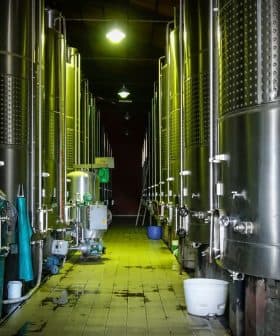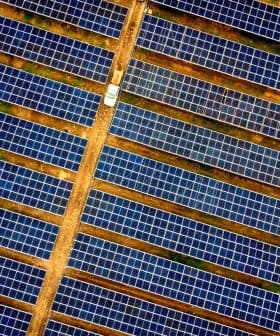Spanish Producers Encounter Losses but Look to Next Season
New data confirms that the current Spanish olive oil campaign is the worst of the century. Still, rainfall late in the season fuels hopes for the future.
In December 2022, olive oil production in Spain was significantly lower than in the previous year, leading to a slowdown in sales due to reduced production and rising prices. Producers are facing challenges due to the drop in production, increased production costs, and the impact of weather conditions on olive farming, with hopes that measures like a decrease in VAT could help boost consumption and exports.
The latest data issued by the Andalusian Food Information and Control Agency (AICA) shows that in December 2022, overall olive oil yield halved when compared to the same month in 2021.
It also confirmed that the olive oil sales slowdown is associated with both reduced production and rising prices.
More specifically, AICA reported that 232.037 tons of olive oil were produced in all of Spain in December. That is significantly less than the approximately 542.600 tons reported in December 2021.
In the first three months of the 2022/2023 season, Spain produced 431.090 tons of olive oil, as reported by the Association of Young Farmers (ASAJA-Jaén).
Luis Carlos Valero, a spokesperson for ASAJA-Jaén, said that “the drop in production is confirmed, and that will affect our ability to meet storage goals. Such reduction is also associated to a slowing down of sales [in December] when compared to the previous months.”
See Also:Challenges Abound for Spain’s Olive Oil ProducersIn a press note, the Union of Small Farmers and Ranchers (UPA) noted that 322.720 tons of olive oil had been shipped since the new season’s sales began last October. That is 16 percent less than the previous season.
According to Cristóbal Cano, UPA secretary-general for the olive and olive oil sector, we are facing “a complicated and difficult campaign, affected by low production. In short, the worst campaign of the century.”
Cano underlined that while the decrease is strictly connected to the lower production, “the slight contraption in sales has nothing to do with the price of oil.”
Rafael Sánchez de Puerta, president of the olive oil sector at the Agri-food Cooperatives of Spain, noted that while olive oil prices have grown consistently over the last year, they might have finally reached their peak and are now expected to stay stable.
In this regard, Juan Luis Ávila, secretary-general of the Farming Organization Coordination Entity (COAG Jaén), noted that “despite olive oil price hikes, olive oil production costs have grown to €8 per kilogram, and that means that [olive oil price] is still below those.”
Olive oil producers have long lamented how the rising costs of energy, fuel, fertilizers and plastics impact overall production costs.
Sánchez de Puerta also pointed to the rising production costs as one of the main hurdles for olive oil producers. As reported by Agroinformacion, Sánchez de Puerta argued that the recent rise in prices had to be expected when production dropped.
“If we want to fight against the rise in the price of oil, we must fight against drought in the olive grove and, for example, increase the irrigable area,” he added.
According to data released by the Ministry for Agriculture, Fisheries and Food (MAPA), at the end of 2022, producers, olive oil millers, bottlers and the Olivarero Communal Heritage had created 625.667 tons of olive oil.
Cano noted that the lower production in December could also be attributed to the frequent rain, which has impacted the number of days workers can harvest olives.
“Fortunately, the rain came and set in. However, the rainfall in recent weeks has not been enough to reverse the bad conditions on the fields, not even remotely,” said Cano, hinting at the effects of the prolonged European drought and heatwaves on olive farming.
“Now we hope that it will continue to rain, that from here to Spring, 350 or 400 more litres of water will come. Should it happen, we could guarantee a normal season, which would help us boost production for the next harvest,” he added.
As the production drop is confirmed, producers have identified ways olive oil consumption and export needs could be met. “We also hope that the drop in VAT from 10 to 5 percent approved by the Government and the lower production will allow us to increase the number of consumers,” Cano concluded.
Share this article









